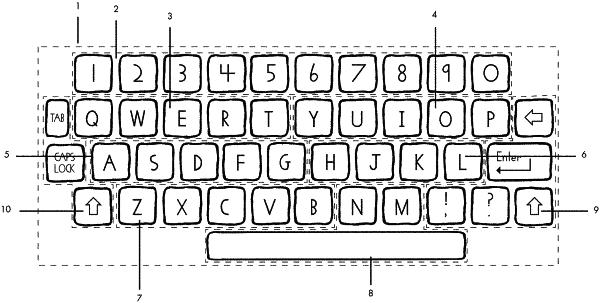| CPC G09B 13/04 (2013.01) | 10 Claims |

|
1. A system for teaching a student keyboarding, said system comprising:
a. a computing device having a display screen and a physical keyboard, wherein said display screen has an activity space;
b. an interactive activity displayed in said activity space, wherein said interactive activity displays a target symbol, wherein the target symbol cues the student to press a corresponding physical key displaying the same symbol on the physical keyboard; and
c. a virtual keyboard displayed on said display screen, said virtual keyboard having a coding scheme and a plurality of virtual keys having a spatial organization,
said coding scheme being comprised of a plurality of unique visual indicators that visually partitions said spatial organization into one virtual column having a plurality of virtual rows, wherein each visual indicator uniquely identifies one virtual row,
every virtual key in each virtual row being additionally marked by a unique symbol and has a depression attribute that said interactive activity can toggle between a pressed state and a released state, and
the interactive activity being configured to toggle selected virtual keys between the pressed state and the released state in response to the student using one or more fingers of a second hand to press physical keys while said one finger of the first hand holds down said physical key.
|